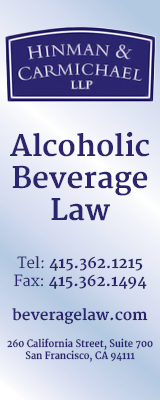FREE! Subscribe to News Fetch, THE daily wine industry briefing - Click Here
![Banner_Xpur_160x600---Wine-Industry-Insight[63]](/wp-content/uploads/Banner_Xpur_160x600-Wine-Industry-Insight63.jpg) |
 ALSO SPONSORED BY: 
Wine Industry Insight |
 |
Nielsen: Big wineries grab 70% of COVID sales – Table and sparkling wine continue off-premise surge – DtC average price declines
Source Nielsen, U.S. off-premise channels, reflecting the week ending May 16, 2020.
For the latest 11-week time frame when COVID-19 heavily impacted consumer behavior (from the week ending 3/7/20 through the week ending 5/16/20), we’ve seen the following change in dollar sales in aggregate (from our in-store retail measurement):
- Total alcohol: +27%
- Beer/FMB/cider: +21.7%
- Beer, specifically: +13.8%
- Wine: +31.1%
- Spirits: +36.1%
Total online off-premise alcohol sales are +141.5% year-over-year for the one-week period ending 5/16/20. (Source: Nielsen U.S.; Nielsen E-commerce measurement powered by Rakuten Intelligence)
“While volume sales of total off-premise alcohol continue to be strong, consumer spending
is an entirely different matter, ” said Danny Brager, Senior Vice President of Beverage Alcohol at Nielsen.“Given the massive shift from on-premise to off-premise and concurrent reductions in the prices consumers pay in these two channels, overall consumer dollars spent on alcohol are still down significantly.
“The week ending May 23 will capture sales leading up to the Memorial Day weekend, and
will be an important one to understand consumer activity around holidays that fall within the pandemic period.”
Other data
- The year-over-year growth rate for total off-premise alcohol dollar sales within Nielsen measured channels is +29.4%, though -4.1% compared to the previous week.
- Wine growth was +30.8% (-3.7% vs. the prior week).
- Comparatively, spirits were +38.8% (though -8.9% vs. the prior week). Beer/FMB/cider
growth is +25.5% (-2.3% vs. the prior week). Beer specifically is +16.3% (-3% vs. prior week). - That’s now 7 weeks since the beginning of March with weekly sales growth for wine
above +30%. - Sparkling wine had another very strong week (+41.8%), well above the growth rate
of table wine (+26.7%), which was still strong.
Smaller formats
There remains considerable growth in some smaller size formats. In the case of canned wine, since the start of the health crisis, the lowest individual weekly growth rate was +52%; each of the last three week’s growth was above +70%.
And in each of the four individual weeks, 375 ml wine bottles have grown over +60%.
The $20-$25 price tier continues to lead off premise growth in Nielsen measured channels, aligning with continuing off premise premiumization.
DtC average price declines
On the Direct to Consumer (DtC) side though, we saw a significant decline in the average price of a bottle of wine in April 2020, to $33 in the current month from $42 a year ago. It’s likely this is a combination of ‘new’ buyers in this channel coming in at lower price points than existing buyers, and suppliers reducing prices on some of their products to stimulate demand and replace lost tasting room business.
Within Nielsen-measured off premise channels, the ‘big’ keep getting ‘bigger’ in wine – the top 100 brands, which accounted for 65% of pre-COVID sales dollars, have accounted for just over 70% of the COVID period year-over-year growth.




